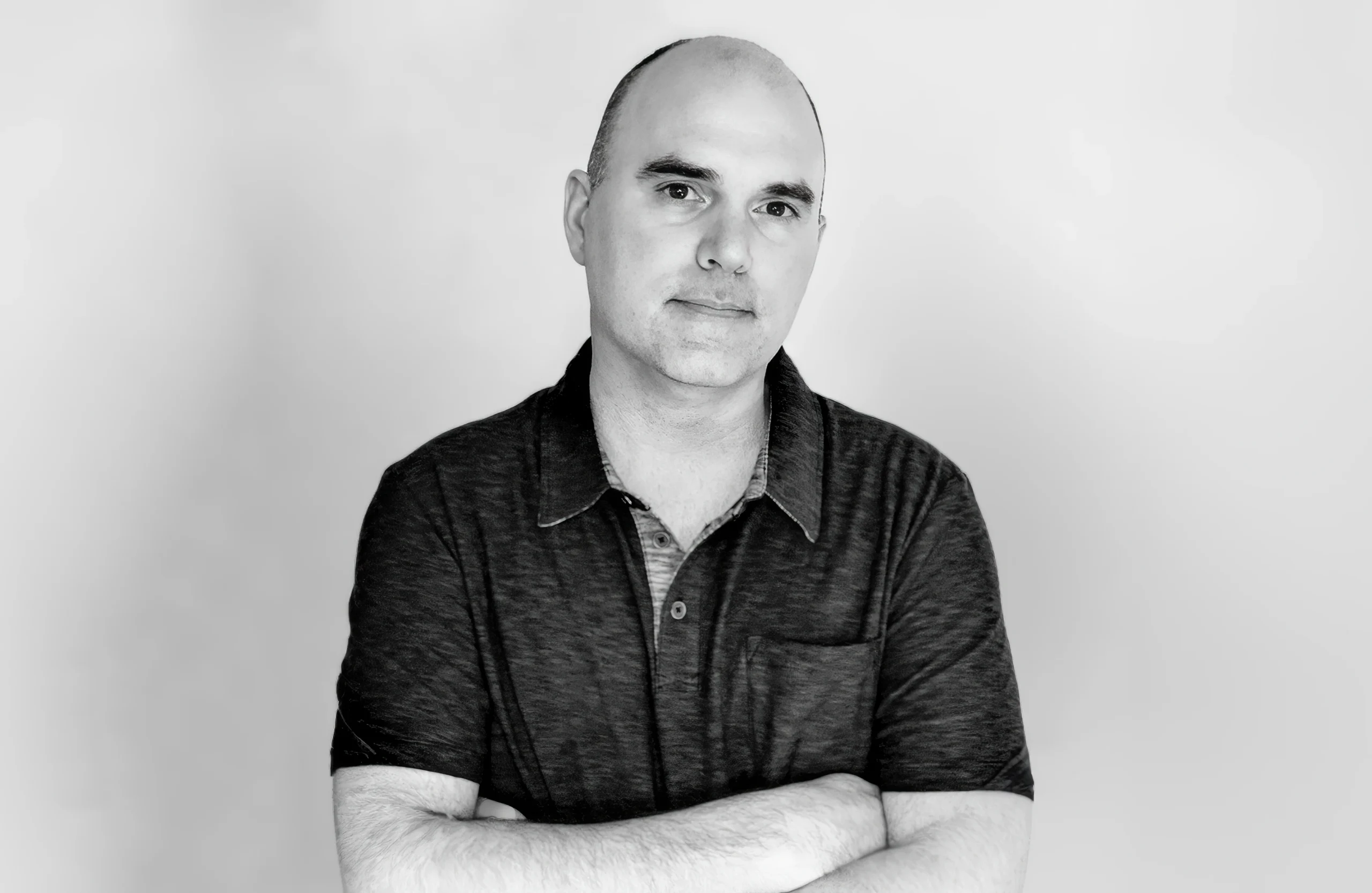Business growth sounds exciting until you’re working 70-hour weeks and still feel like you’re drowning.
Everyone talks about scaling. Nobody talks about what it actually feels like when your business starts growing faster than you can handle. When every system breaks. When your biggest strength becomes your biggest liability.
Here’s the thing: I’ve built businesses for 20 years. Watched hundreds of others try. And the stages of business growth that CEOs, founders, and marketing leaders actually face? Nothing like what they teach in business school.
Real growth isn’t a smooth curve up and to the right. It’s a series of painful transformations where everything that got you to one level will kill you at the next.
And you wonder why most businesses never make it past $3 million in revenue.
They hit Stage 3 — The Bottleneck — and instead of transforming, they implode.
Why the textbook stages are useless
Pick up any business book and you’ll see the same lifecycle chart. Startup, growth, maturity, decline. Nice and neat. Linear progression. Clear milestones.
Total fantasy.
Real businesses don’t follow neat progression. They lurch between chaos and clarity. They grow, break, rebuild, and grow again. Sometimes all in the same week.
I learned this the hard way. Built my first agency thinking I just needed to get more clients. More revenue. More people. More everything.
Nearly killed the business at $1.2 million because I was still trying to personally approve every client email.
The traditional models don’t prepare you for the emotional gut punches. The 3 AM panic attacks. The moment you realize your biggest strength is now your biggest problem.
So let me tell you what actually happens. No theory. No MBA-speak. Just patterns I’ve seen play out hundreds of times.
Stage 1: The Hustle ($0-$500K)
Everything is duct tape and prayer.
You’re the salesperson, the delivery team, the accountant, and the janitor. Your “office” is wherever you can find WiFi. Your business plan is a notebook full of crossed-out ideas.
And honestly? This stage is kind of fun. Pure adrenaline and possibility.
What it actually feels like: Sunday doesn’t exist. Every prospect feels like life or death. You celebrate every small win because rent depends on it. Imposter syndrome hits daily but you push through.
The metrics that matter:
- Cash in the bank (measured in weeks of survival)
- Number of paying customers (even if it’s three)
- Time to cash (how fast you get paid)
The mistake I made: Saying yes to everything. Web design? Sure. SEO? Why not. Social media management for a dental practice? Absolutely.
BTW — this is where I built a website for a horse photographer for $500. Still a client today actually. But spreading yourself thin seems smart when you’re desperate. It’s not.
The death trap: Thinking more services equals more opportunity. Wrong. You become mediocre at twenty things instead of great at two.
The one thing that saves you: Pick one thing you’re genuinely good at and double down. I finally focused on web design and SEO. Everything else was a distraction.
How to know you’re ready to level up:
- You have consistent revenue (even if small)
- You’re turning down work (because it doesn’t fit)
- You can predict next month’s income within 20%
Listen, everyone romanticizes the hustle stage. Don’t. It’s exhausting. But it teaches you resourcefulness you’ll need forever.
Stage 2: The Hero ($500K-$1M)
You ARE the business. And that’s becoming a massive problem.
Revenue is growing. You’ve hired a few people. But every decision, every client interaction, every important email still goes through you. You’ve become the bottleneck you swore you’d never be.
This stage feels like success but tastes like burnout.
What it actually feels like: You wake up to 47 Slack messages. Your team is paralyzed without your input. You fantasize about a vacation but know the business would implode. You’re making money but have no life.
The metrics that matter:
- Revenue per employee (probably terrible)
- Your personal hours worked (probably 60+)
- Client concentration (too much from too few)
- Decision bottlenecks (everything)
The mistake I made: Believing I could scale myself. Thought if I just worked harder, stayed later, answered emails faster, I could handle it all.
Spoiler: You can’t multiply yourself through effort.
The death trap: The hero complex. You’ve built the business through sheer will. Letting go feels like betrayal. But holding on will kill you and the business.
I’ve watched this pattern hundreds of times. The founders who can’t evolve past this stage either burn out, sell for less than they should, or watch their business slowly suffocate under their need for control.
The one thing that saves you: Document one process. Just one. I started with our client onboarding. Took three hours to write down what was in my head. Saved twenty hours the next month.
How to know you’re ready to level up:
- You literally cannot take on more work personally
- Your team asks you the same questions repeatedly
- You dream about work (nightmares count)
- Revenue growth is slowing because you’re maxed out
The hero stage is seductive. You feel important. Needed. Irreplaceable.
That feeling is exactly what will destroy your business.
Stage 3: The Bottleneck ($1M-$3M) — Where Most Businesses Die
Welcome to the killing fields.
This is where most businesses go to die. Not because of market conditions or competition. Because the very things that made you successful are now destroying you.
According to U.S. Census Bureau data, only about 4% of businesses ever surpass $1 million in annual revenue. Of those that do, the majority never make it past $5 million. They get stuck in an endless loop of chaos and eventually burn out or blow up.
Everything that worked is broken. But you’re too busy fighting fires to fix it.
What it actually feels like: Chaos. Pure chaos. Clients are complaining about inconsistency. Good employees are leaving. You’re making more money but keeping less. Every day feels like you’re barely keeping the wheels on.
You know you need systems but you’re too busy to build them. You know you need better people but you’re hiring whoever can start Monday. You know you need to let go but you don’t trust anyone to do it right.
The metrics that matter:
- Employee turnover (probably spiking)
- Profit margins (probably shrinking)
- Customer complaints (probably rising)
- Time to deliver (probably increasing)
- Your stress level (probably maximum)
The mistake I made: Hiring fast instead of hiring right. We were drowning, so I hired anyone who could fog a mirror. Three bad hires cost us $200K and six months of progress.
Quality beats speed. Always. Even when it feels like you’re dying.
The death trap: The chaos becomes normal. You accept that “this is just how business is at this size.” Your team accepts it. Your customers start looking elsewhere.
Once chaos becomes culture, you’re dead. You just don’t know it yet.
The one thing that saves you: Stop everything and build three core systems:
- How you deliver your core service
- How you onboard new clients
- How you onboard new employees
Yes, revenue might dip while you do this. But the alternative is death by a thousand cuts.
How to know you’re ready to level up:
- You have documented processes that work
- Team members can handle clients without you
- You can take a week off without disasters
- Profit margins are improving
Here’s the brutal truth about The Bottleneck: It’s not a stage, it’s a test.
A test of whether you can transform from operator to owner. Most fail.
Stage 4: The Let-Go-or-Die ($3M-$10M)
Your job completely changes. And most founders hate it.
You’re not doing the work anymore. You’re directing others who do the work. The skills that built the business — your hustle, your attention to detail, your hands-on approach — now actively hurt growth.
This stage breaks people.
What it actually feels like: Identity crisis. Who are you if you’re not the person solving problems? Watching others do things “wrong” is torture. You catch yourself micromanaging then hating yourself for it.
Some days you wonder if you even like business anymore.
The metrics that matter:
- Decisions made without you (should be rising)
- Strategic initiatives led (vs. tactical work)
- Team capability scores
- Customer satisfaction without your involvement
The mistake I made: The swoop and poop. I’d delegate something, then swoop in at the last minute to “fix” it. Destroyed morale. Taught my team to half-ass everything because I’d redo it anyway.
Took me two years to break this pattern. Cost me good people.
The death trap: The halfway house. You say you’re delegating but you’re really just pretending. You give responsibility but not authority. You want growth but won’t give up control.
The one thing that saves you: Pick your three best people. Give them each one area to completely own. Then — and this is the hard part — let them fail.
They’ll make mistakes. Things will break. But they’ll learn. And more importantly, you’ll learn to let go.
How to know you’re ready to level up:
- You go days without being in the tactical weeds
- Your team makes decisions you wouldn’t have made (and they work)
- You’re focused on next quarter, not next week
- The business runs smoothly during your vacations
BTW — this is where most founders discover they don’t actually like being CEOs. They like being craftsmen. No shame in that realization.
Stage 5: The Systems ($10M-$25M)
The machine runs without you. And it’s beautiful and terrifying.
You’ve built something that doesn’t need your daily involvement. Process beats personality. Systems create predictability. The business has momentum beyond any individual.
But here’s the thing: Success can be more dangerous than struggle.
What it actually feels like: Boredom mixed with pride. You watch the machine run smoothly and wonder if you’re even needed. Some founders start stupid side projects here. Others sabotage their own success.
The Sunday scaries are replaced by existential questions.
The metrics that matter:
- System efficiency rates
- Process adherence scores
- Innovation pipeline (probably weak)
- Market share trajectory
- Employee engagement (watch for drops)
The mistake I made: Coasting. We hit $15M and I thought we’d figured it out. Stopped pushing. Stopped innovating. Stopped caring as much.
Two years later, hungrier competitors were eating our lunch. Had to fire myself up again.
The death trap: The comfortable decline. Everything works so you stop improving. Your best people leave for more exciting opportunities. Competitors copy what you did two years ago but better.
From what I’ve seen, companies that coast at this stage typically lose 20-30% market share within three years. Not overnight. Just a slow bleed that feels like “market conditions” but is really internal decay.
Comfort is the enemy of greatness.
The one thing that saves you: Institutionalize innovation. Force yourself to break things that work. Set aside 20% of resources for experiments. Some will fail. That’s the point.
Stay hungry or become someone else’s lunch.
How to know you’re ready to level up:
- Current success feels hollow
- You’re asking “what’s next?” constantly
- The market is shifting and you see it
- You have resources to invest in transformation
Stage 6: The Identity Crisis ($25M-$50M)
You’ve made it. By every traditional measure, you’re successful.
So why does it feel so empty?
This stage isn’t about business mechanics. It’s about meaning. You’ve proven you can build something. Now what?
Most founders hit this wall within 2-3 years of reaching $25M. About half sell within the next five years. Not because the business is failing — because they are.
What it actually feels like: Restlessness. You’ve climbed the mountain and realized it’s not that tall. The money is nice but it stopped motivating you at Stage 4. You need a new game to play.
Many founders sell here. Or worse, they stay but check out mentally.
The mistake I made: Thinking more of the same would fulfill me. Opened new offices. Launched new services. Acquired competitors.
None of it filled the hole because the hole wasn’t about business size.
The death trap: Growth for growth’s sake. You chase bigger numbers because you don’t know what else to chase. But scaling without purpose is how good companies become soulless corporations.
The one thing that saves you: Find a mission beyond money. Maybe it’s transforming your industry. Building the best workplace in your city. Creating generational wealth for your team.
The mission matters more than the metrics now.
How to know you’re ready to level up:
- Traditional success feels empty
- You’re ready to risk comfort for purpose
- Legacy matters more than income
- You want to build something that outlasts you
Stage 7: The Legacy ($50M+)
This isn’t about size anymore. It’s about significance.
You’re building something bigger than business. Culture eats strategy. Purpose drives profit. Your role is vision and values, not tactics and tasks.
Few make it here. Even fewer do it well.
What it actually feels like: Weight and freedom simultaneously. Every decision impacts hundreds of families. But you’re finally building what you actually wanted all along — even if you didn’t know it.
The metrics that matter:
- Cultural health scores
- Purpose alignment
- Industry transformation
- Lives impacted
- Sustainable growth rate
The death trap: Forgetting what made you special. Big companies love to complicate simple things. They create policies that kill the very culture that made them great.
The one thing that saves you: Stay connected to the front lines. Talk to customers. Work support tickets. Remember why you started.
The moment leaders lose touch with reality is the moment decline begins.
The truth about business growth
Here’s what twenty years taught me: Growth isn’t about getting bigger. It’s about getting clearer.
Clear on who you serve. Clear on what you deliver. Clear on why you exist. Clear on how you operate.
Each stage forces you to get clearer or die.
The businesses that survive aren’t the strongest or smartest. They’re the ones willing to kill what worked yesterday to build what’s needed tomorrow.
Every stage requires a different version of you. The hustle that saves you at Stage 1 kills you at Stage 4. The control that builds Stage 2 destroys Stage 5.
Your biggest competitive advantage isn’t what you know. It’s how fast you can unlearn what’s no longer true.
So what stage are you in?
Be honest. Not where you want to be. Where you are.
What’s breaking around you? What got you here that won’t get you there? What are you holding onto that’s holding you back?
Because here’s the thing: Every business is either growing or dying. There’s no steady state. No cruise control. No final destination where you can relax.
The game never ends. It just changes.
And frankly? That’s what makes it fun.
Now stop reading about growth and go fix what’s broken. Your business is waiting for the next version of you to show up.
Believe me when I say this: The stage you’re in right now? It’s preparing you for what’s next. The pain has a purpose. The chaos is creating clarity.
But only if you’re willing to transform.
Your move.
Take action right now
Grab a whiteboard. Write your current stage at the top. Underneath, write:
- What’s breaking?
- What am I still doing that I shouldn’t be?
- What truth am I avoiding?
Then circle one thing and fix it this week. Growth starts with letting go.
Quick reference: The 7 stages of business growth
|
Stage |
Revenue Range | The Real Problem |
The Transformation Needed |
| The Hustle | $0-$500K | Saying yes to everything | Focus on one thing you do well |
| The Hero | $500K-$1M | You ARE the business | Document processes to scale yourself |
| The Bottleneck | $1M-$3M | Everything’s breaking at once | Build systems or die trying |
| Let-Go-or-Die | $3M-$10M | Your strengths now hurt growth | Shift from doing to directing |
| The Systems | $10M-$25M | Success breeds complacency | Stay hungry through innovation |
| Identity Crisis | $25M-$50M | Growth without purpose feels empty | Find a mission beyond money |
| The Legacy | $50M+ | Losing touch with what matters | Stay connected to the front lines |




